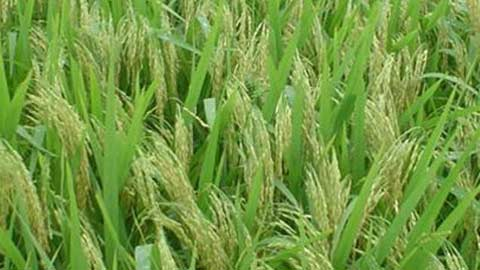 Using $9000 granted by the Minister of Agriculture and Rural Development, Professor Nguyen Thi Tram and her co-workers created a new rice species and sold it for VND10 billion (over $500,000).
Using $9000 granted by the Minister of Agriculture and Rural Development, Professor Nguyen Thi Tram and her co-workers created a new rice species and sold it for VND10 billion (over $500,000).In mid-2008, agricultural scientists were surprised at the news that a female scientist sold her new rice variety for VND10 billion to a business in Nam Dinh province. The female scientist was Professor Nguyen Thi Tram, the winner of the Kovalevskaia Award for outstanding female scientists in 2000, the winner of the State Sci-Tech Award 2005, Labor Hero title winner 2010 and the creator of many new rice varieties.
In mid-2008, agricultural scientists were surprised at the news that a female scientist sold her new rice variety for VND10 billion to a business in Nam Dinh province. The female scientist was Professor Nguyen Thi Tram, the winner of the Kovalevskaia Award for outstanding female scientists in 2000, the winner of the State Sci-Tech Award 2005, Labor Hero title winner 2010 and the creator of many new rice varieties.
 Professor Tram said she was very lucky to be instructed by late Professor Luong Dinh Cua (a famous researcher of genetics) when she was recruited to the Institute for Food Crops. She researched and created many new rice varieties, which were used widely in Vietnam, for instance NN-9, NN-10, NN-23.
Professor Tram said she was very lucky to be instructed by late Professor Luong Dinh Cua (a famous researcher of genetics) when she was recruited to the Institute for Food Crops. She researched and created many new rice varieties, which were used widely in Vietnam, for instance NN-9, NN-10, NN-23.
After getting a doctorate in the former USSR, she became a lecturer at the Hanoi Agriculture University. She both worked as a teacher and a researcher and created some more new rice varieties.
In the 1990s, the demand for cross-bred rice variety rose sharply. Imported cross-bred rice was used widely, competing with local varieties.
In 1993, when she attended a training course in China, Tram came up with an idea of making a locally cross-bred rice variety. She and her colleagues at the Agriculture University immediately implemented the project but they lacked funding.
Minister of Agriculture and Rural Development Nguyen Cong Tan granted the group $9000 from his own fund to purchase the necessary equipment. “Minister Tan’s support motivated me to work harder. At a meeting of the Ministry of Agriculture and Rural Development, Mr. Tan also promised to grant worthy rewards to those who create the first cross-bred rice variety in Vietnam. His statement furthered motivated me and other scientists in Vietnam,” Tram recalls.
In 1996, she produced the first 12 kilos of F1 cross-bred rice variety and sent it to the Agricultural Encouragement Department for testing. The rice developed very well. Minister Tan immediately granted a reward to Tram.
“I was very happy but one week later, my rice was attached by a disease. Leaves turned white. I was ashamed and met with the Minister to return the reward. But he didn’t blame me and instead said that his rewards was for the first cross-bred rice variety, not for the good cross-bred rice variety,” Tram says.

After that, the Ministry of Agriculture and Rural Development and Ministry of Education and Training granted nearly VND5 billion (hundreds of USD) to Tram’s cross-bred rice projects. The projects were a big success. Investment capital was recovered in the first year of testing.
“We could not meet the market demand for the new cross-bred rice variety so we had to transfer the property rights to businesses,” Tram says.
Though she has retired, Professor Tram is still working with her group to create new rice varieties. From three members the group has grown to include 13.
“Farming in Vietnam faces challenges and risks due to climate change. To develop sustainable agriculture, we need a contingent of qualified and devoted scientists. This is applied science which means that scientists need time to gain experience. when they are successful, most of them are old. That’s a serious challenge for us, especially for women,” Tram says.

 Previous page
Previous page Back to top
Back to top







